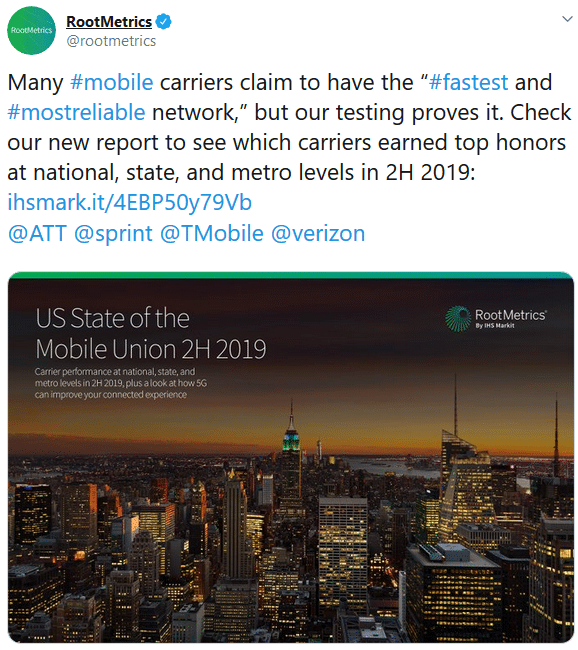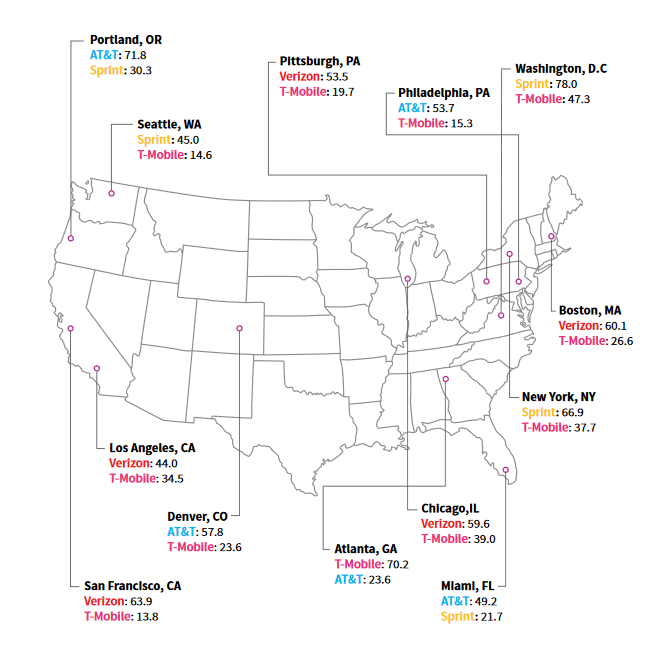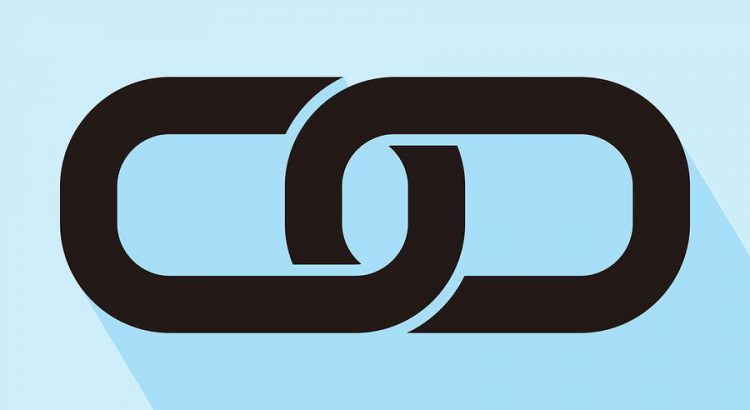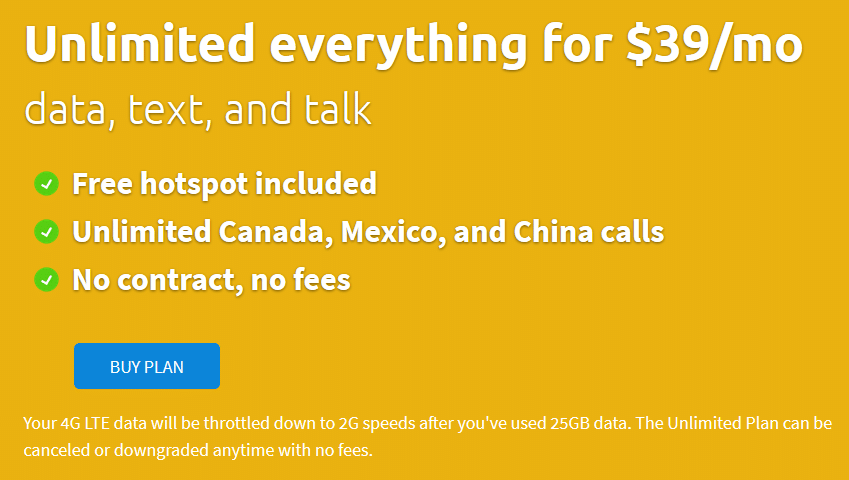RootMetrics recently tweeted about how its latest analyses prove which networks are the fastest and most reliable:

I’m a big fan of RootMetrics, but the tweet annoyed me. There’s a ton of flexibility in how network evaluators can approach their work. Will performance data be crowdsourced from consumers or collected via in-house testing? How will data be cleaned and aggregated? What regions will be included? Etc.
Phrases like “fastest network” and “most reliable network” are ambiguous. Do you determine the fastest network based on average download speeds, median download speeds, or something else?
RootMetrics’ tweet is especially odd in light of their latest report. Depending on which speed metric you choose to look at, you could argue that either Verizon or AT&T has the fastest network. AT&T narrowly beats Verizon in terms of median download speed. Verizon narrowly beats AT&T in RootMetrics’ overall speed scores.1













